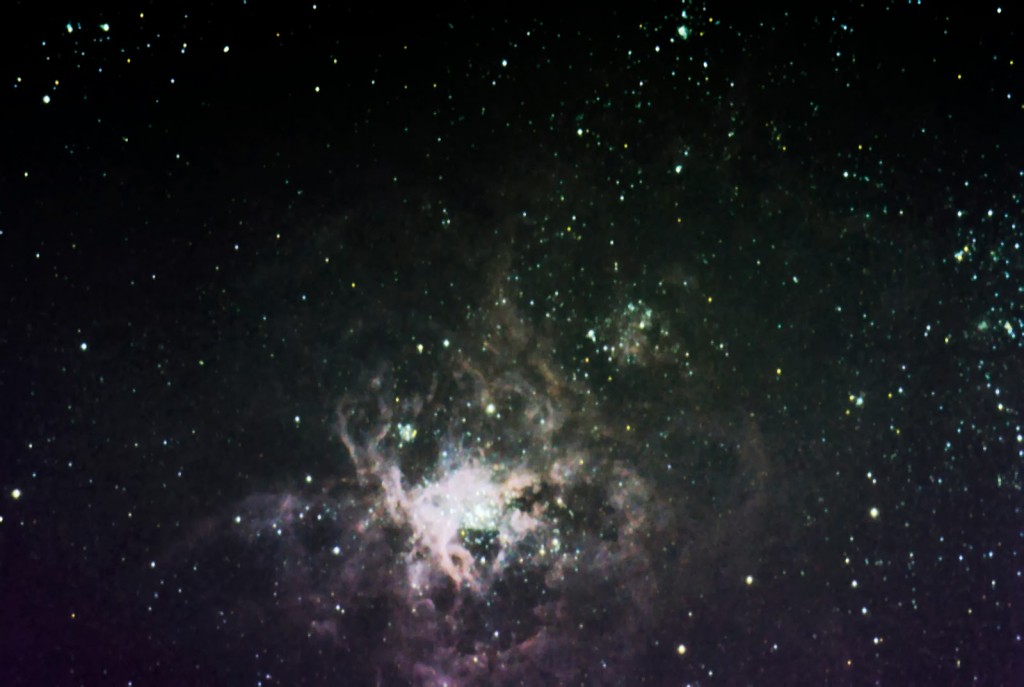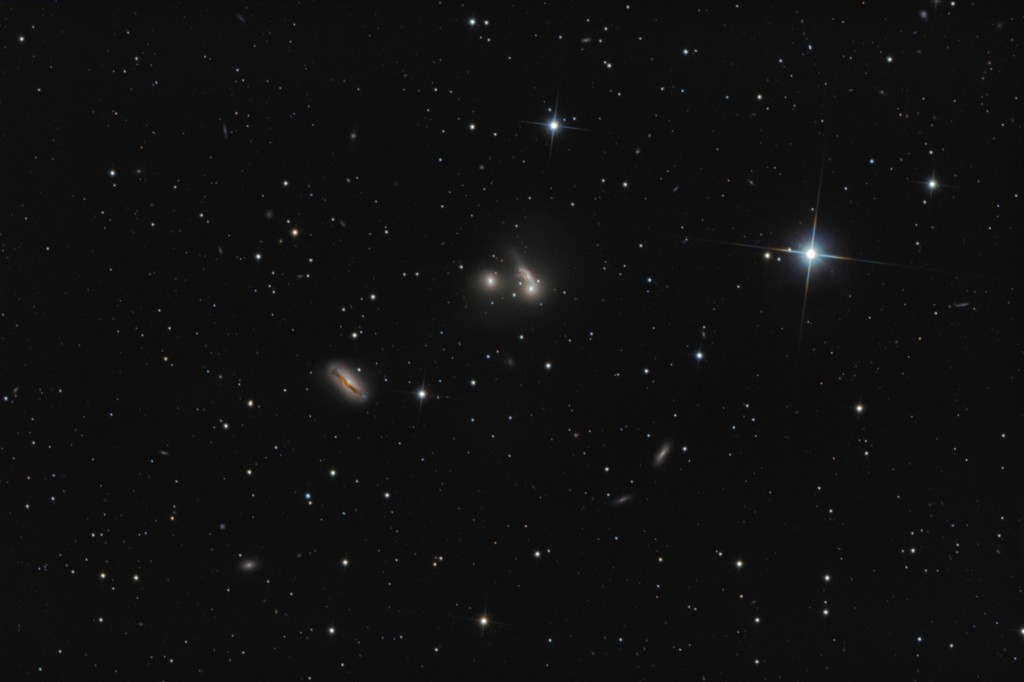
Good astrophotography is completely reliant on reliable tracking by the telescope. You have the mount, your computer, tracking and guidance software, and all the pieces in the chain have to be working and communicating properly with each other. There’s nothing ‘plug-and-play’ about this game and when things don’t go right, it can be incredibly frustrating.
Mark Nickols, despite experiencing such problems, still managed to pull off this nice shot of the Tarantula Nebula, part of the Large Magellanic Cloud, a small galaxy close to ours at about 163,000 light years:
I’m currently battling some guiding issues. In the early hours two nights ago, after some frustrating hours on another target, as an additional experiment I turned the scope to the tarantula nebula. The guiding software refuses to work at all for this target I guess because it is too near the pole and the software complains that the stars are not moving enough too do a calibration. Anyway I got off just a small number of shots before things got very hazy and I had to give up. So here anyway is just 8 x 2 minute stacked exposures of the tarantula – unguided. Could have been centred better but could be worse.

